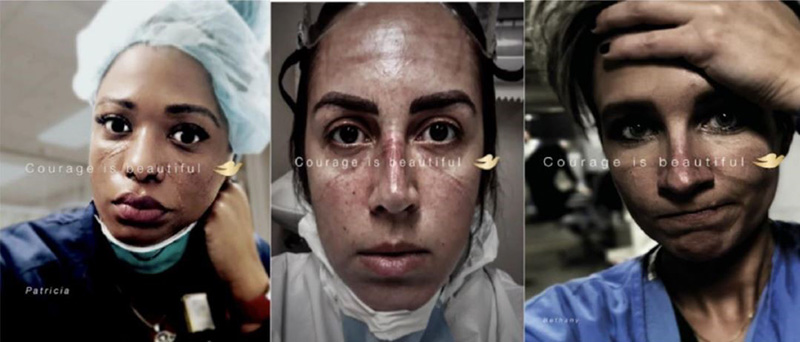Neuro-Insight’s Holly Jordan examines the winning entries to uncover the scientific secrets to their success.
As most marketers will know all too well, advertising’s memorability is a critical vehicle of its success. Neuroscientists and research specialists have proven the link between long-term memory encoding and ROI, so when looking at this year’s winners much of what we know from analysing the subconscious is confirmed.
Our brains work like a still camera, encoding snapshots of information into memory. It’s these snapshots of information that we use to make sense of the world around us. Unfortunately for advertisers, our brains are less interested in brands and more interested in stories. Effective storytelling – alongside delivering new, intriguing and, perhaps most importantly, personally relevant information – is known to drive long-term memory. So, harnessing the power of great storytelling is fundamental for driving long-term, real-life, impact.
This year’s Creative Effectiveness Lions winners all share common themes, which demonstrate why, from the brain’s perspective, they all succeeded in driving meaningful brand impact.
Showcase, don’t shout, and make it personal
We consider the brain as having a metaphorical built-in ad blocker – when our brain feels like it is being sold to, it disengages. Weaving the product or brand into the story is far more powerful.
Three’s The Island tackled issues of distrust through showcasing the transformative power of its network by making a remote island accessible to all. Focusing on the lives of everyday people made this campaign relatable to a wide audience. Personal relevance is a known driver of long-term memory, and this undoubtedly contributed to the campaign’s success.
When it comes to delivering environmental messages, personal relevance needs to go a level deeper to drive real action – a challenge many brands struggle with. The human brain, above all else, is wired to serve itself. Renault’s Village Electrique overcame this challenge by delivering a self-serving campaign to inhabitants of a remote French village. By giving residents electric cars, consumers could individually explore the unique benefit of ‘going green’, and the positive change this had on their world.

Matching content to changing contexts
We know that the context in which advertising appears has a direct impact on its effectiveness. As we exist in a complex and ever-changing media landscape, it’s fundamental for brands to understand the unique value of each context and identify where best to deliver content.
Global lockdowns required us to adapt to a new way of life and for brands this meant recognising the new context in which their audiences were living, reconsidering the ways to communicate with them and understanding their responsibility to help consumers in an unprecedented way.
The best examples of this are the lifesaving campaigns by L’Enfant Bleu and the Canadian Women’s Foundation. Both winners were quick to react to the changing contexts triggered by the pandemic by successfully implementing active interventions that could provide refuge for the most critically vulnerable during this time – victims of abuse. L’Enfant Bleu created an avatar within a video game, while the Canadian Women’s Foundation established a discrete hand gesture for use on video calls. Both approaches ensured victims of abuse still had a safe and secret context in which they could communicate for help.

To spread their message, L’Enfant Bleu utilised the trust that children have in gaming micro-influencers. Our own research shows that influencer posts generate 114% stronger memory than ads seen on other platforms. The smaller fanbase of micro-influencers makes them feel more accessible and trustworthy from the brain’s perspective, making them an even stronger subset of influencer marketing for brands to harness to drive action.
Real people, true emotions
All memories are coloured by emotion, meaning it plays a key role in driving future action. However, not just the happy emotions count, any emotionally relevant narrative is important.
The power of emotion was demonstrated in Dove’s Courage is Beautiful. Despite the campaign showing harrowing images of exhausted healthcare workers during the pandemic, the execution showed real, uncensored, human emotions. The use of close-ups worked well to deliver the appropriate emotional narrative and helped make the content more relatable – something that the brain responds incredibly well to.

The more relatable something is the more likely the brain is to encode it. As humans we are hardwired to find social connection, so content that focuses on real people is hugely effective, which has contributed to many of this year’s winners.
Take the Canadian Down Syndrome Society: they gave the community a space to be empowered and actively change their future. We know the brain pays attention to personally relevant content, in this case real people addressing an everyday challenge, and the use of direct questions provides interaction, which further sustains attention.
However, relevance goes beyond the campaign; it applies to the ambassadors that brands use to amplify their story. We know that if content shared by an ambassador is incongruent to their identity it has a detrimental impact on brain response and is strongly disliked. One example from this year’s winners is The Female Company, which carefully selected feminist celebrities and female politicians congruent to the campaign objectives to drive change.

Pulling it all together
This year’s Grand Prix winner, Michelob Ultra, succeeded in all the above. They responded to greater consumer demand for organic products alongside reluctance to change from farmers, by supporting farmers throughout the three-year transition period. At the heart of their campaign was the farmer, supported by both brand and consumer, making this an incredibly powerful human-focused narrative.
An abridged version of this article appears in the WARC Creative report, Insights from the 2022 Creative Effectiveness Lions winners.

